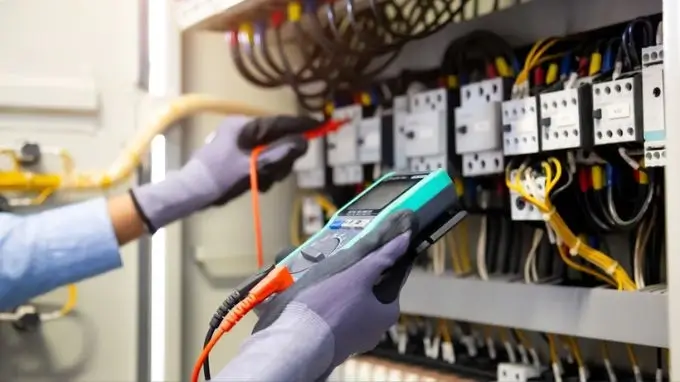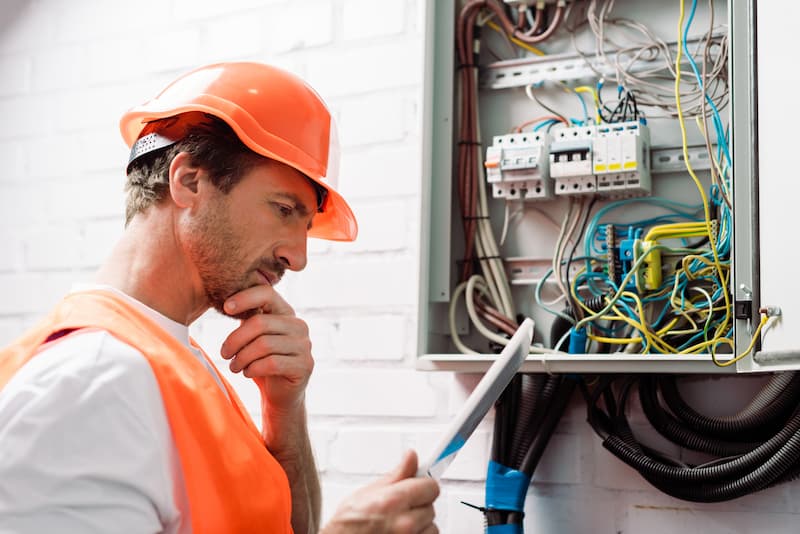Professional Solutions for Electrical System Troubleshooting and Repairs
Reliable repairing and repair of electric systems call for a systematic technique, leveraging both progressed diagnostic devices and seasoned knowledge. Common concerns such as circuit overloads and faulty circuitry demand immediate attention, yet the intricacies of electric systems can often cover the underlying troubles.

Common Electrical Problems
While electric systems are made for reliability, they can frequently run into a range of typical troubles that may interfere with performance and security. One widespread concern is circuit overload, which happens when as well numerous devices draw power from a solitary circuit, bring about stumbled breakers or blown merges. technical support for electrical industry. This can not only hamper electrical efficiency but also present a fire risk
An additional constant issue is malfunctioning circuitry, commonly due to age, wear, or incorrect setup. Harmed or frayed cords can cause short circuits, causing blackouts or electrical shocks. In addition, loose links can create recurring power loss, developing frustrating and potentially hazardous circumstances.
Ground mistakes are another concern, particularly in wet or damp environments where electrical devices is utilized. These mistakes can cause serious safety dangers, necessitating immediate attention to guarantee proper grounding and circuit protection.
Lastly, flickering lights can show concerns ranging from overloaded circuits to malfunctioning light components. Identifying these typical electric problems is important for keeping the integrity and security of electrical systems, ensuring they run effectively and effectively. Dealing with these concerns immediately can protect against a lot more extreme issues and enhance overall system dependability.
Diagnostic Tools and Strategies
Using exact analysis devices and techniques is vital for efficiently recognizing and fixing electric system problems. Numerous instruments assist in specific analyses, ranging from basic multimeters to advanced oscilloscopes - technical support for electrical industry. Multimeters are essential for measuring voltage, existing, and resistance, allowing service technicians to rapidly determine malfunctioning elements or connections
Clamp meters are specifically helpful for gauging existing without disrupting the circuit, improving safety and security during diagnostics. For even more complex troubleshooting, oscilloscopes permit the visualization of electrical signals with time, providing insights right into waveform abnormalities that might indicate underlying problems.
Along with these devices, infrared thermography is vital for detecting overheating parts, which can represent approaching failures. Insulation resistance testers better assist in recognizing jeopardized insulation, crucial for protecting against electrical risks.
Methods such as aesthetic evaluations, connection examinations, and circuit mapping are likewise indispensable to an efficient diagnostic process. By combining these devices and strategies, specialists can establish a thorough understanding of electrical systems, making certain exact diagnoses and reliable repair work. Inevitably, leveraging the appropriate diagnostic resources not only boosts repairing performance however also adds to the longevity and safety of electric installments.
Step-by-Step Troubleshooting Overview

Next, use diagnostic tools such as multimeters and circuit testers to check for connection, voltage, and current flow in the circuit. Beginning at the power resource, verifying that it is operational, then map the circuit detailed, checking each element in the process. Paper your findings to maintain quality throughout the process.
As soon as you have actually determined the defective element, isolate it from the circuit. Perform needed repair work or replacements, ensuring that all wiring and connections are secure. After addressing the concern, recheck the whole system to validate that it operates correctly.
Safety Preventative Measures Throughout Repairs
Making sure safety throughout electrical repair work is critical to avoid mishaps and injuries. Before commencing any kind of job, it is important to switch off the power supply at the breaker and verify that the circuit is de-energized using a reputable voltage tester. Individual protective devices (PPE), consisting of insulated gloves and safety goggles, should be used to mitigate the danger of electric shock and eye injuries.
Furthermore, keeping a clutter-free work space is critical. Make sure devices are in excellent problem and ideal for the jobs available. Utilizing devices with shielded handles can further enhance safety and security. It is additionally important to prevent servicing electrical systems in damp or damp problems, as dampness dramatically boosts the risk of electric shock.
Secure loose clothing and connect back long hair to avoid any kind of entanglement with electric components. Acquaint on your own with the particular electric codes and laws relevant to your location to ensure compliance and safety and security during the repair service process.
When to Call a Professional
While safety preventative measures are crucial for any electrical repair work, there are scenarios where the intricacy or extent of the job necessitates the competence of an expert electrician. Homeowners should be especially careful when handling concerns that entail circuit breakers, electric panels, or the main power supply. Any kind of indicators of electrical fires, such as see this here scorched smells or flickering lights, warrant instant specialist attention.
Furthermore, if you encounter consistent tripping of breaker or constant electric surges, these content might suggest underlying issues that require specialized diagnostic tools and understanding. Projects that require comprehensive rewiring, setup of new circuits, or connections to high-voltage systems need to constantly be left to accredited electrical contractors, as inappropriate handling can result in extreme dangers.
Moreover, regulatory compliance is critical in electrical work. Experts are familiar with neighborhood codes and regulations, guaranteeing that all repair work satisfy safety requirements.
Verdict
To conclude, reliable fixing and fixing of electrical systems require a systematic technique, leveraging innovative diagnostic tools and adherence to safety and security preventative measures. By identifying common electrical problems and utilizing a structured troubleshooting overview, numerous problems can be fixed effectively. Nevertheless, in instances of complexity or safety problems, getting in touch with a qualified electrician remains necessary. This ensures not only the integrity of the electric system yet additionally the safety and security of individuals and residential property entailed.